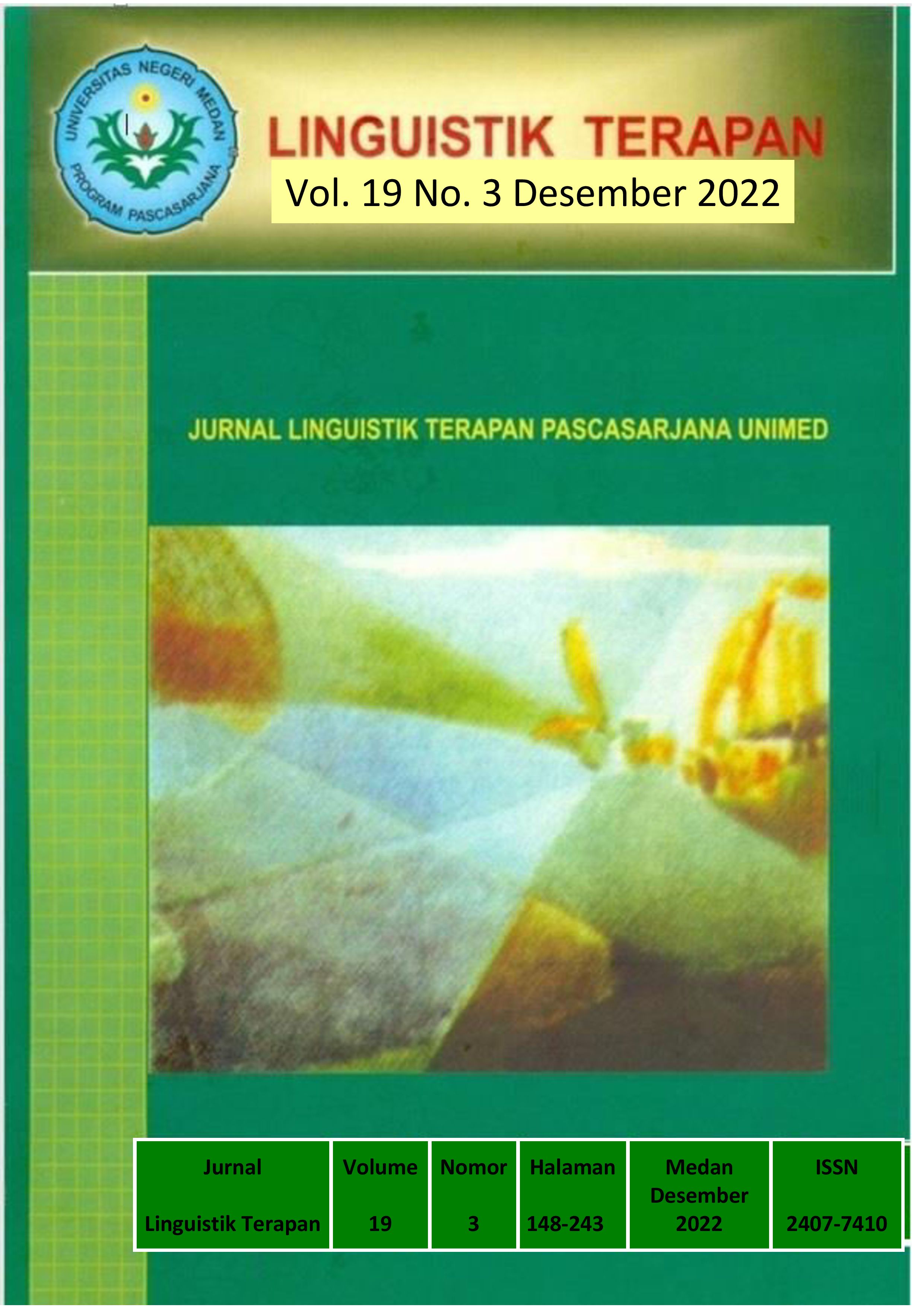THE INTERPERSONAL FUNCTION OF PRESIDENT JOKO WIDODO'S SPEECH AT THE COP26 SUMMIT IN GLASGOW
DOI:
https://doi.org/10.24114/lt.v19i3.42054Keywords:
Mood Types, Speech Function, Interpersonal Function, Illocutionary ActAbstract
This study addresses Mood Types of interpersonal function and the realization of speech function in Mood types. Language has its own speech function to provide, to elicit, to influence, and to initiate information and also the way how it's implemented. This function can be analyzed through an interpersonal function using the principal grammar system; Mood. This study is categorized as qualitative research. It aimed to find out the Mood Types, the realization of speech function in Mood Types, and the action of the illocutionary act that was performed behind the language in President Joko Widodo™s speech at the COP26 summit in Glasgow. The findings showed that there are 3 Mood types such; 18 (75%) for declarative, 4 (17%) for imperative, and 2 (8%) for interrogative. Also, the findings showed that the realization of speech functions in Mood types are statement, command, and question. In addition, the illocutionary acts found are representative, directive, commissive, and expressive.References
Ayoola, M.O (2013). An Interpersonal Metafunction Analysis of Some Selected Political Advertisements in Some Nigerian Newspapers. International Journal of Humanities and Social Science.165-177.
Bakuuro, J. (2017). Demystifying Halliday™s Metafunctions of Language. International Journal of Language and Literature. 211-217.
Bustam, M. R. (2019). A Discourse Analysis of Interpersonal Metafunction in Donald Trump˜s Speech Recognizing Jerusalem as Capital of Israel, Universitas Komputer Indonesia. Bandung, Indonesia. 157-161.
Butt, et.al. (1995). Using Functional Grammar: An Explorer™s Guided. Sydney: Macquarie University
Damanik, P. H & Nurlela. T. T. Z. (2020). Interpersonal Meaning in Donald Trump™s Speech In Response To Coronavirus Pandemic. Jurnal Sains Sosio Humaniora, Fakultas Ilmu Budaya Universitas Sumatera Utara.
Halliday, M. A. K. (1994). An introduction to functional grammar. (2nd.Ed.). London: Edward Arnold.
Halliday, M.A.K. (2014) Introduction to Functional Grammar. Australia: University of Sydney.
Ramey, et.al, K. E. (2016). Qualitative Analysis of Video Data: Standards and Heuristics. ISLS, 1033-1040.
Searle, J. R. (1976). A Classification of Illocutionary Acts. Language in Society, 5(1), 1“23. https://doi.org/10.1017/S0047404500006837
Thompson, G. (2014). Introducing Functional Grammar. UK: University of Liverpool.
Walliman, N. Research Methods: The Basics. USA: Routledge, New York. pp. 72-73, 2011.
Yuliana, D. & Imperiani. D. A. (2017). The Realization of Interpersonal Meaning in Course Newsletters: a Systemic Functional Linguistic Perspective. Universitas Pendidikan Indonesia
Ye, R. (2010). The Interpersonal Metafunction Analysis of Barack Obama's Victory Speech. Guangzhou Guangdong: Guangdong Pharmaceutical University.
Yule, G. (1996). Pragmatics. Oxford: Oxford University Press.
Downloads
Published
How to Cite
Issue
Section
License
Copyright (c) 2023 Rina . Mulya, Dina . Sartika

This work is licensed under a Creative Commons Attribution-ShareAlike 4.0 International License.






